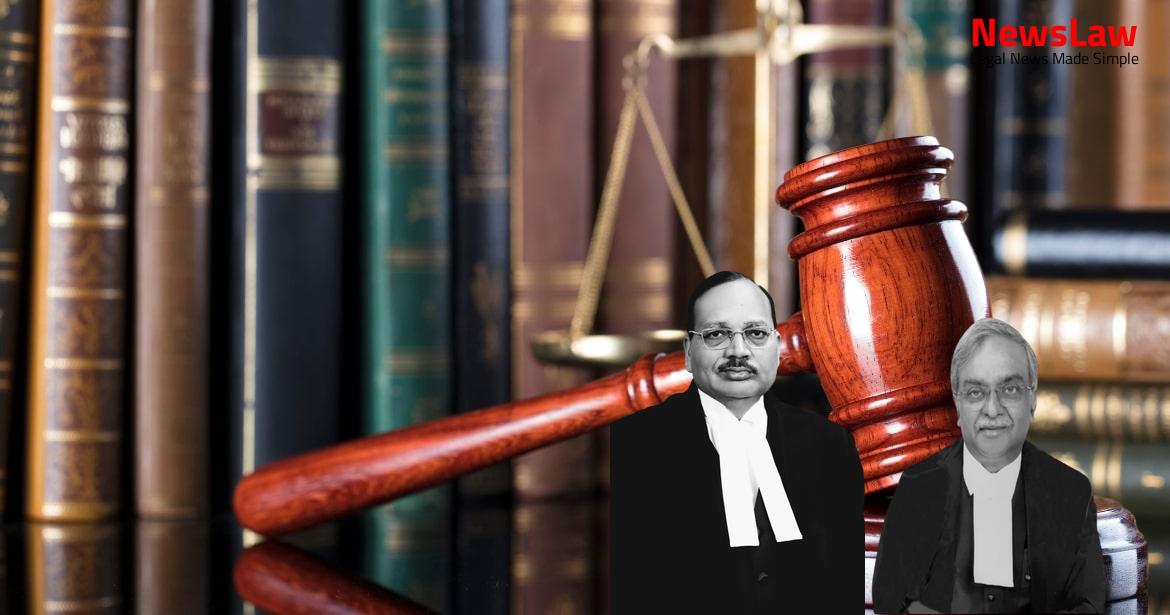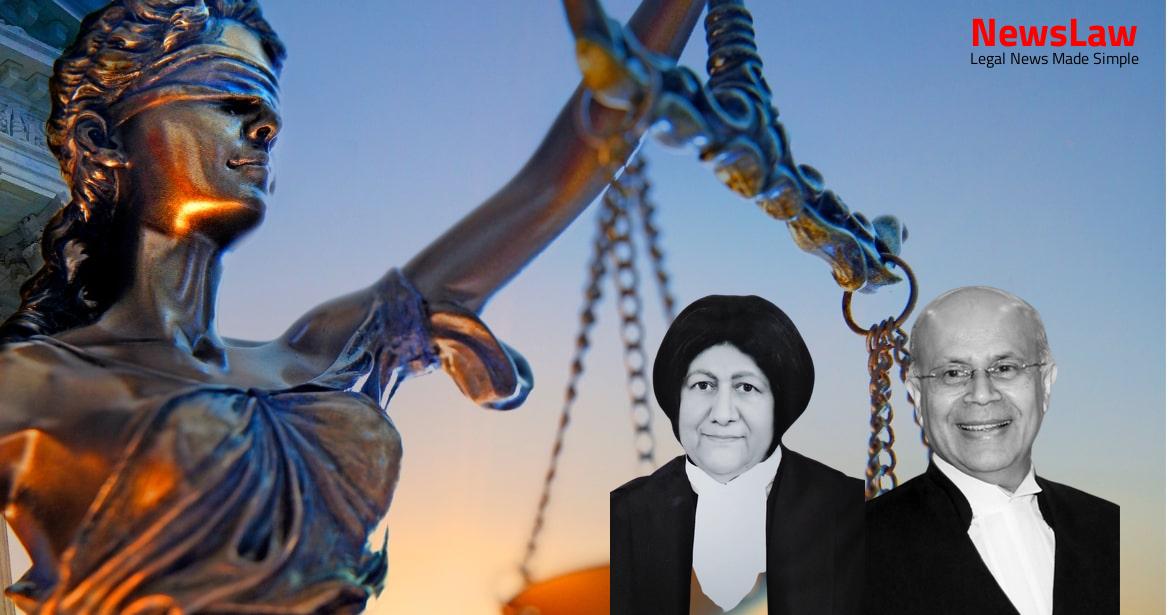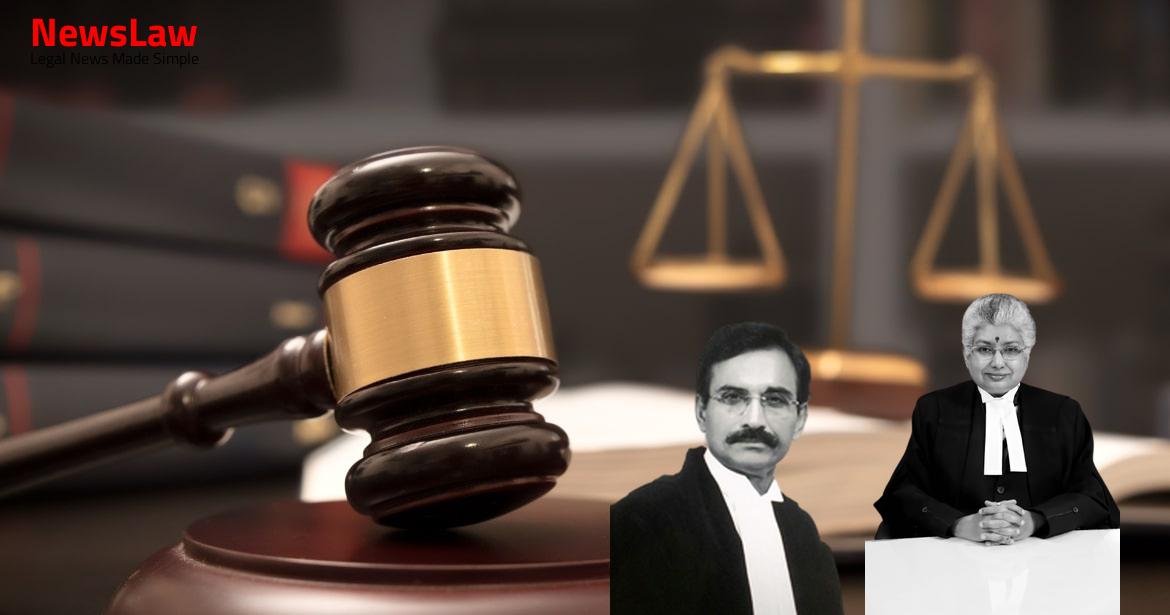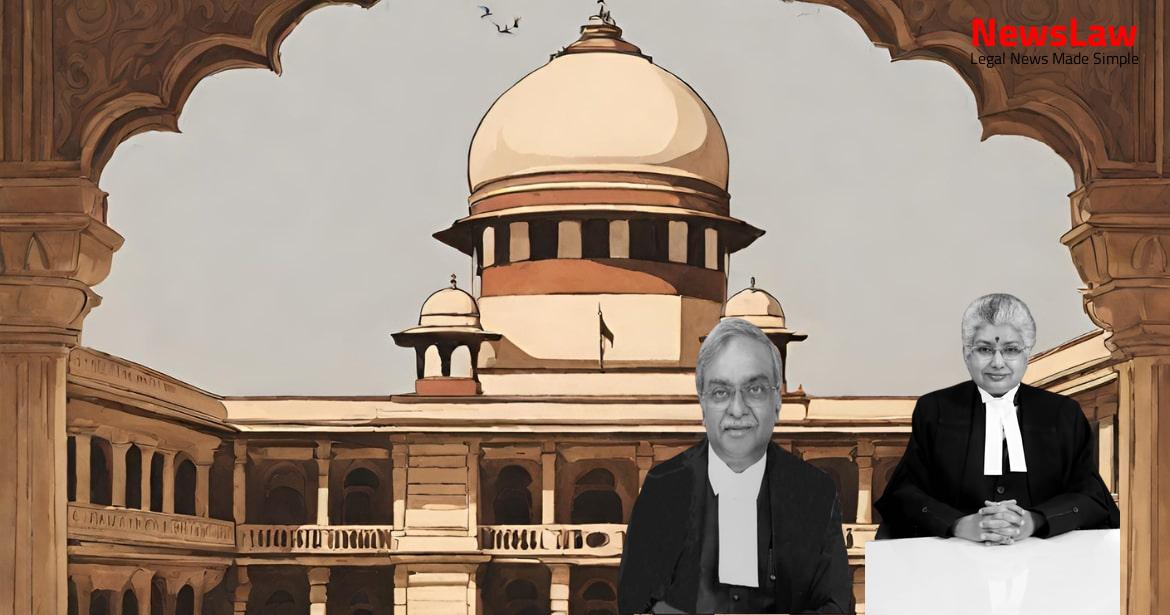Explore the nuanced legal analysis conducted by the court in a recent criminal case, focusing on the scrutiny of eyewitness testimonies and the application of joint liability principles. The court’s thorough evaluation of the evidence presented and its considerations regarding the nature of exhortation and common intent provide valuable insights into the complexities of criminal law. Stay tuned to unravel the intricacies of legal reasoning in this compelling case.
Facts
- Appeal arose from a judgment and order dated 13 November 1991 of the Sessions Judge Banda in Sessions Trial No 266 of 1990.
- Sessions Judge convicted Idrish of an offence under Section 302 and the appellant of offences under Sections 302 and 34 of the IPC, sentencing them to life imprisonment.
- Appeal was filed against the judgment before the High Court.
- High Court, in a judgment dated 19 June 2020, dismissed the appeal and upheld the decision of the trial Judge.
- The delay of five and a half hours in lodging the FIR was explained by the witnesses fearing the accused
- The police station was situated 11 kilometers away
- The occurrence took place in November at dusk
- Charges were framed on March 4, 1991
- Idrish was charged under Section 302 while the appellant was charged under Sections 302 and 34 of the IPC
- The witnesses were verified and the distance from which they saw the incident was confirmed
- The motive for the murder was not challenged
- Despite opportunities, the appellant did not engage a counsel
- The prosecution presented three eyewitnesses: PW-1, PW-2, PW-3
- The appellant was the nephew of Idrish
- Previous enmity between the appellant and the deceased was noted
- Idrish died during the appeal process
- The proceedings were adjourned for various reasons
Also Read: Electoral Malpractices in Mayor Election
Arguments
- (i) PW-1 deposed that he was present at the scene of occurrence due to the illness of the deceased’s daughter and was on his way to inform the deceased about it.
- (ii) The deceased’s daughter was not examined during the trial, raising doubts about the reason for PW-1’s presence.
- (iii) PW-1 has been suggested as a planted witness since the FIR he lodged was almost five and a half hours after the incident.
- (iv) PW-1 is the younger brother of the deceased, while PW-2 and PW-3 are related to him.
- The case relies on direct evidence
- Non-examination of two witnesses is considered irrelevant
- Credible eyewitnesses PW-1, PW-2, and PW-3 provide ocular evidence
- Incident occurred at 5:30 pm but FIR was lodged at 10:30 pm based on a written report
Also Read: Balancing Power and Transparency: Electoral Bonds Struck Down, Disclosure Mandated
Analysis
- Presence of the deceased near the pond, the appellant exhorting Idrish to kill the deceased, and Idrish shooting the deceased as testified by all three witnesses.
- Scrutiny of testimonies of interested witnesses with caution due to their relation to the deceased.
- Inconsistencies in witness statements regarding the position of the deceased when shot.
- Lack of material establishing common intent under Section 34 of the IPC.
- No recovery of the weapon used in the crime.
- Evaluation of evidence by the Sessions Judge and High Court regarding the presence and actions of the appellant, Idrish, and deceased near the pond.
- No discredit to the witness testimonies solely based on being relatives of the deceased.
- Failure to recover the weapon used and examine a ballistic expert.
- Presence of prior enmity between the deceased and Idrish indicated during the trial.
- Establishment of common intention through the exhortation of the appellant to Idrish to commit the crime.
- Consistency in witness statements about the nature of the exhortation by the appellant and the sequence of events leading to the fatal shot.
- Section 34 of the IPC does not create a distinct offence, but is a principle of constructive liability.
- In order to incur joint liability, there must be a pre-arranged and pre-mediated concert between the accused.
- The plan may be formed suddenly without a long interval between the act and pre-meditation.
- The examination of a ballistic expert is not a strict rule in every case involving the use of a lethal weapon.
- Involvement in a crime can be proven beyond a reasonable doubt based on exhortation given by an accused before the act.
- Non-recovery of the weapon does not discredit the prosecution’s case if eyewitness accounts are reliable.
- The opinion of a ballistic expert is crucial when both the firearm and crime cartridge are recovered.
- The role of the appellant, his presence at the spot, and the nature of the exhortation have been consistently described by the three eyewitnesses.
- Based on the above facts, the appeal has been found to have no merit and is dismissed accordingly.
- Any pending applications will be disposed of as a result of this judgement.
Also Read: Recall of Resolution Plan Approval: Legal Analysis
Case Title: GULAB Vs. THE STATE OF UTTAR PRADESH (2021 INSC 852)
Case Number: Crl.A. No.-000081-000081 / 2021



